Excerpts from Jim Conrad's
Naturalist Newsletter
entry dated May 19, 2022, notes from a camping trip among hills about 7kms ENE of Tequisquiapan, Querétaro state, MÉXICO
elevation about 2040m (6700 ft), near N20.57°, W99.85°
FIDDLELEAF IN A GROTTO
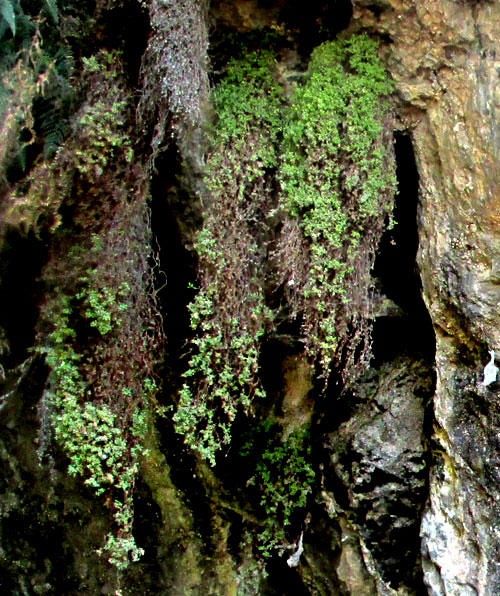
On the northern edge of the two-small-blocks-wide, hillcrest village of La Higuera, at the base of a tall, vertical cliff composed mostly of compacted volcanic ash, there's a wonderful grotto where big ash and baldcypress trees provide blessedly cool, moist shade in the otherwise scrubby, parched-dry landscape. Chill water dribbles continuously from a pipe extending from the cliff. The water splashes into a pool of water where the townsfolk come to fill their big water bottles. A small altar to the Virgin with faded plastic flowers rises nearby, and the rock wall inside the grotto is heavily covered with mosses, ferns, and festoons of vegetation such as that shown above.
Tiny, white flowers barely visible on the above plant offered a chance to identify a plant I'd not seen hanging from moist rock walls like this before. Fortunately, one plant dangled low enough to snatch a flowering branch, so here's a blossom, photographed in dim grotto light, that grew on it:
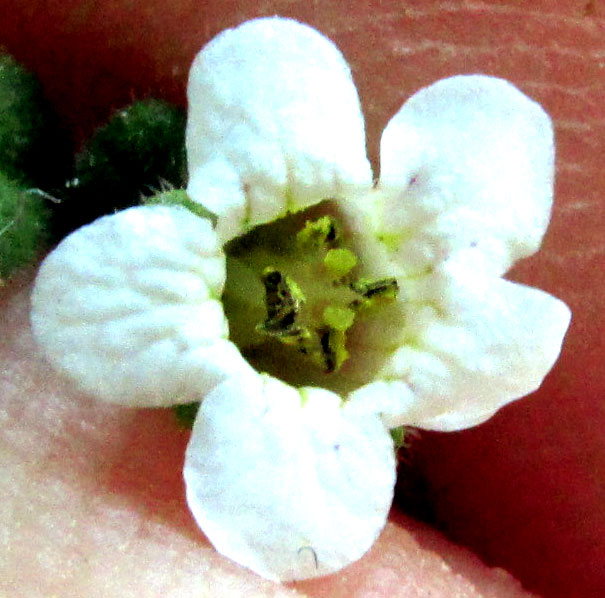
It's a 5-lobed corolla only about 5mm long (1/5th inch), with 5 stamens alternating with the lobes and appearing to show at least two different lengths. These details by themselves eliminates many possible plant families it could belong to. However, the most revealing observation is that the greenish yellow little ball-shaped and grainy-surfaced things are stigmas, and there's two of them, seemingly on their own styles. That feature by itself disqualifies the vast majority of flowering plant families.
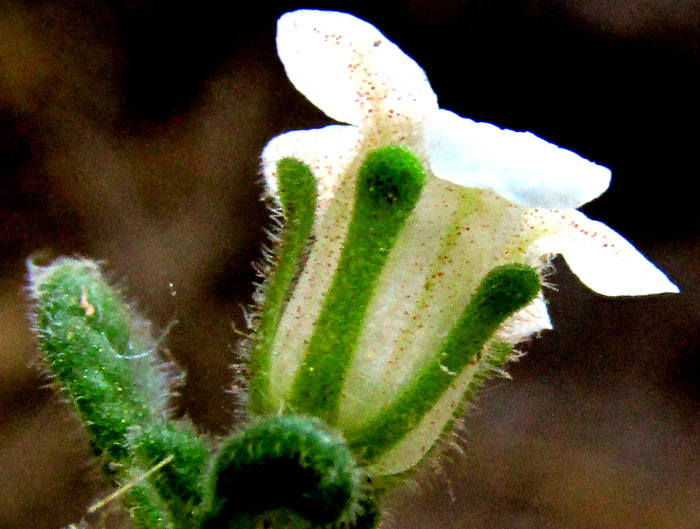
The above side view of the flower shows other surprising features, especially the extremely unusual calyx lobes, which not only are heavily covered with long, somewhat stiff hairs, but also many of the hairs are gland-tipped. Also, the sepals are remarkably narrow and separate from one another, and instead of coming to a sharp tip, they form enlarged, rounded tips; they're "spatulate." Even the Corolla bears glandular hairs, and the leaves are even more heavily coated.
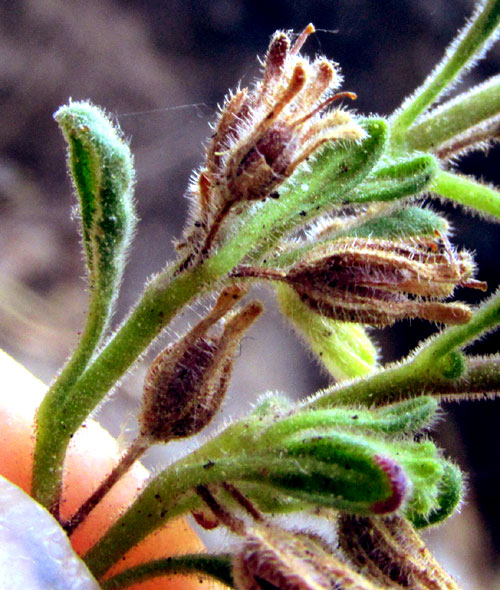
Once the flowers are pollinated, the corolla shrivels and falls off. In most flowers the calyx also disappears or at least becomes unnoticeable. On this species, however, the calyx lobes persist, and so does their hairiness. In the above photo it's also to be noted that flowers appear alone or in clusters of very few.
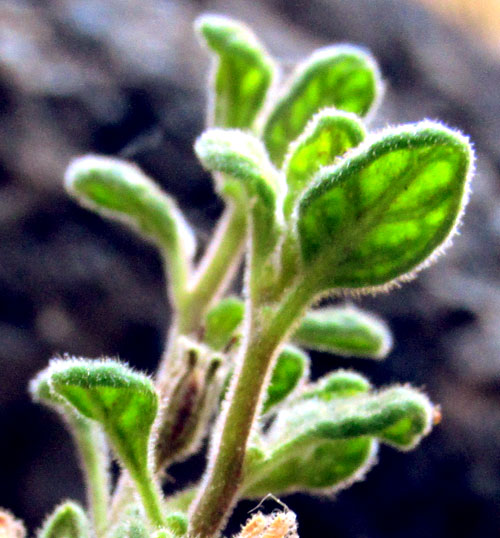
As seen at the right, the hairy leaves, which are hardly 12 or so mm long (half inch), are round-tipped, and the blade margins tend to curl under.
All these features and more lead to the big Borage Family (Boraginaceae), or maybe the Waterleaf Family (Hydrophyllaceae), or maybe even the Nama Family (Namaceae), depending on how up-to-date you are, and willing to change ideas. During my lifetime our plant has been assigned to all these, but as of 2016 most liberal-thinking botanists are saying our plant belongs to the Nama family and, in fact, is a member of the genus Nama.
About 50 Nama species are recognized, with some 39 found in Mexico, and for our arid upland central Mexico region known as the Bajío, nine are listed. Many species of Nama are referred to in English as fiddleleafs, and in the picture the leaves are indeed shaped like upside-down green fiddles.
Our little fiddleleaf is NAMA ORIGANIFOLIUM, endemic just to upland Mexico, from the arid northeastern part to the south-central states of Morelos and Guerrero. It specializes in canyons and rocky slopes in areas of semiarid scrub, tropical deciduous forests (mesquite, acacia, etc.), and pine and oak forests, between the elevations of 1500-2800m (4900-9200ft).
Nama origanifolium was first noticed by science when Alexander von Humboldt and Aimé Bonpland collected plants in our area in 1803. Our plant's full binomial name is Nama origanifolium H.B.K., the H.B.K. signifying that Humboldt, Bonpland and Karl Sigismund Kunth, a German botanist with whom Humboldt and Bonpland collaborated, first published a scientific description of the species, in 1818.